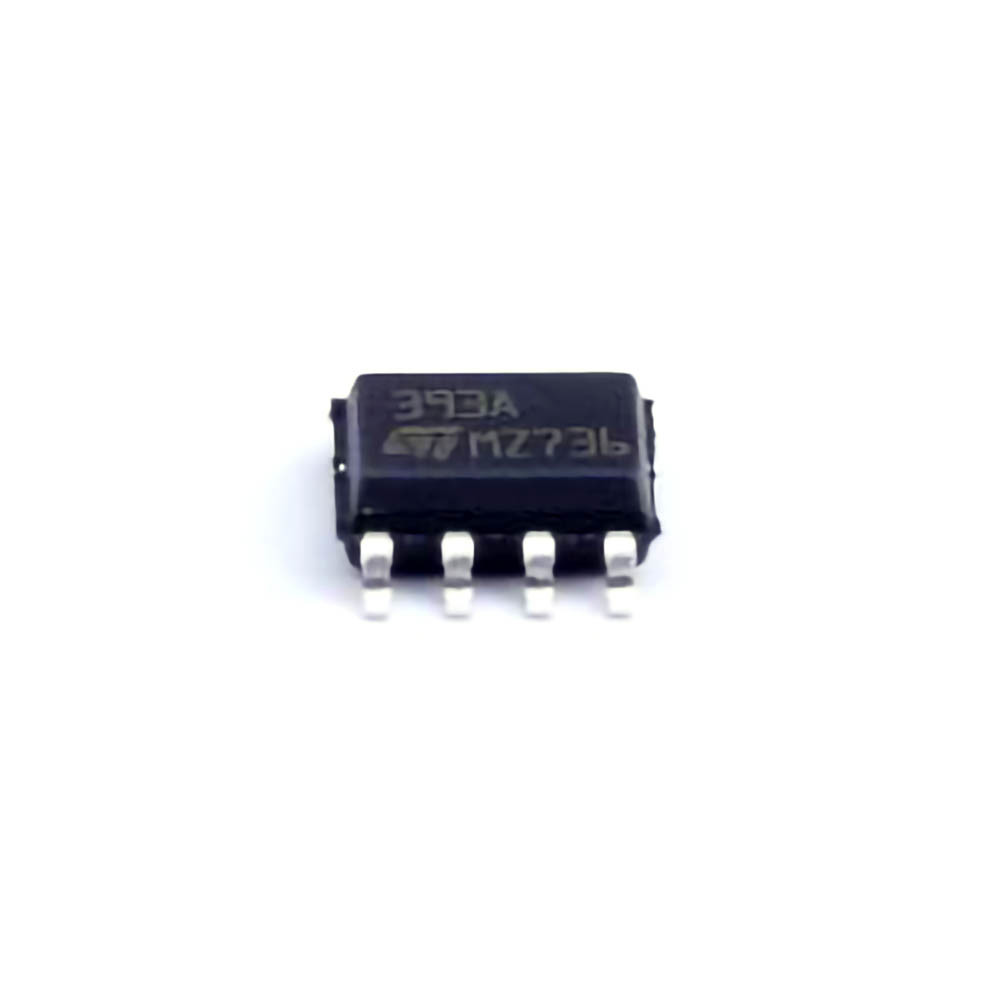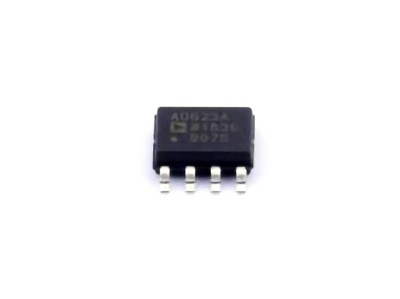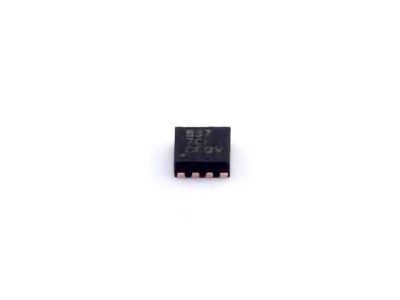
Introduction to the LM393DT and Common Issues
The LM393 DT is a versatile and widely used comparator integrated circuit (IC). It is often employed in sensor circuits, motor control systems, and other analog applications that require the comparison of two input voltages. As an open-collector output comparator, the LM393DT provides flexibility in interfacing with different types of logic levels. However, like any component in a circuit, it can encounter issues. Understanding how to troubleshoot and solve these problems is crucial for maintaining circuit stability and performance.
Understanding the LM393DT Comparator
The LM393DT belongs to the LM393 family, which is known for its low Power consumption, wide voltage range, and reliability. It has two independent comparator inputs, an inverting input (−) and a non-inverting input (+), and an open-collector output, meaning it requires an external pull-up resistor to function properly. The IC can compare voltage levels and output a digital high or low signal, depending on the configuration and the voltage levels at the inputs.
It’s essential to understand the typical application of the LM393DT, which usually involves comparing a reference voltage against a variable voltage (such as the output from a sensor). The output state of the comparator changes based on which input voltage is higher. This feature is particularly useful in creating voltage threshold detectors, zero-crossing detectors, and pulse width modulation (PWM) circuits.
Common Issues with the LM393DT
Despite its reliability, users of the LM393DT often run into several recurring issues when implementing it in circuits. These problems can range from simple wiring errors to more complex issues related to power supply, input voltages, and output behaviors. Below are some of the most common troubleshooting scenarios:
1. No Output Signal or Unexpected Output
One of the most frequent issues with the LM393DT is the absence of an output signal or an unexpected output. When troubleshooting this problem, several factors should be considered:
Incorrect Wiring: Ensure that all pins are correctly connected. The input pins (non-inverting and inverting) must be connected to the appropriate voltage sources, while the output pin must have a pull-up resistor to a supply voltage.
Pull-up Resistor: The open-collector output of the LM393DT requires a pull-up resistor. Without this resistor, the output will not function properly. Common values for the pull-up resistor range from 1 kΩ to 10 kΩ, depending on the desired logic level.
Power Supply Issues: If the IC is not powered correctly, it will fail to function. Double-check the voltage supply and ensure that it is within the operating range specified by the manufacturer (typically 2V to 36V).
Floating Inputs: If either of the input pins (inverting or non-inverting) is left floating (not connected to a defined voltage), the comparator will behave unpredictably. Always ensure that both inputs have a defined voltage level.
2. Hysteresis Issues
Hysteresis refers to the phenomenon where the output state of the comparator does not immediately change when the input voltage crosses the threshold voltage. This can lead to noise and erratic behavior, especially in systems that require precise switching.
Solution: To mitigate hysteresis issues, external feedback can be applied to introduce positive feedback into the circuit. This feedback creates a region where the output state is stable, even as the input voltage fluctuates slightly around the threshold. A resistor can be connected between the output and the non-inverting input to introduce this feedback loop.
3. Inconsistent Thresholds
In some applications, users may experience an inconsistent threshold behavior. This can occur if the reference voltage or the input signal is unstable, resulting in erratic switching. The LM393DT comparator relies on stable voltage references to produce reliable outputs.
Solution: Ensure that the reference voltage is steady and not subject to noise or interference. In some cases, adding a decoupling capacitor to the reference voltage or input pins can help stabilize the signal and improve the consistency of the comparator’s output.
4. Slow Response Time
The response time of the LM393DT can sometimes be slower than expected, particularly in high-speed applications. This issue is commonly caused by insufficient power supply decoupling or excessive capacitance on the input pins.
Solution: To improve the response time, add proper decoupling capacitors (e.g., 100nF ceramic capacitors) near the power supply pins of the LM393DT. This will help reduce noise and stabilize the power supply. Additionally, make sure that the input voltage levels are changing within the comparator’s recommended operating range to prevent slow switching times.
5. Output Sticking at One Level
Another common problem with the LM393DT is the output “sticking” at either a high or low level, regardless of the input voltages. This can happen if there is an issue with the pull-up resistor or if the comparator is not properly powered.
Solution: Verify the pull-up resistor value and ensure that it is correctly placed between the output pin and the supply voltage. A typical pull-up resistor value should be chosen based on the logic level required by the downstream circuit. If the resistor is too large, it might not pull the output high enough, causing issues.
Advanced Troubleshooting and Circuit Design Solutions
While many issues with the LM393DT are relatively straightforward to troubleshoot, there are more complex scenarios where advanced troubleshooting is required. In these cases, understanding the interaction between the components, the power supply, and the environment becomes critical to resolving the problem.
1. Dealing with Power Supply Noise
Power supply noise can interfere with the LM393DT’s operation, particularly in sensitive applications like analog-to-digital conversion or precise voltage threshold detection. Noise on the power lines can cause erratic behavior in the comparator, resulting in false triggering or incorrect output states.
Solution: To mitigate power supply noise, use decoupling capacitors near the LM393DT’s power pins. A combination of a 100nF ceramic capacitor and a larger electrolytic capacitor (e.g., 10μF) can effectively filter out high-frequency noise and stabilize the power supply. Additionally, consider using a low-dropout regulator (LDO) to provide a cleaner power source if necessary.
2. Input Voltage Range Issues
The LM393DT comparator has a specific input voltage range that must be adhered to for proper operation. The input voltage must not exceed the supply voltage or go below ground (for single-supply applications). If the input voltages exceed the recommended limits, the comparator may not function correctly, or it could even be damaged.
Solution: Always check the input voltage ranges in the datasheet and ensure that the input signals are within the acceptable range. If the input voltage exceeds the supply voltage, consider using level-shifting techniques or a different comparator with a wider input range.
3. Overcoming Output Saturation
One advanced issue that can occur with the LM393DT is output saturation. In some configurations, especially when the comparator is connected to high-impedance loads, the output may not transition cleanly between high and low states. This is due to the open-collector nature of the output, which requires the proper pull-up resistor value and load impedance.
Solution: Use a lower-value pull-up resistor (e.g., 1 kΩ) to provide a stronger drive to the output. Additionally, make sure that the load connected to the comparator’s output does not draw excessive current, as this could prevent the output from reaching the full logic level.
4. Compensating for Temperature Drift
Like most analog components, the LM393DT is susceptible to temperature variations, which can affect its performance. Temperature changes can cause the comparator’s threshold voltage to drift, leading to incorrect output behavior in some applications.
Solution: To minimize the effects of temperature drift, use precision voltage references and resistors with low temperature coefficients. Additionally, consider implementing a temperature compensation mechanism in your circuit design, such as a thermistor or a reference voltage IC with built-in temperature stability.
5. Integrating the LM393DT with Other Circuit Components
When integrating the LM393DT into more complex circuits, interactions with other components like microcontrollers, sensors, and power supplies can introduce challenges. For example, when interfacing with a microcontroller, it’s essential to ensure that the voltage levels between the comparator and the microcontroller’s inputs are compatible.
Solution: Use voltage level shifters if necessary, especially when working with 3.3V logic systems. Also, ensure that the input voltages to the LM393DT are within the comparator's input voltage range to avoid malfunctioning.
6. Creating a Robust Comparator Circuit Design
For a more reliable and efficient design using the LM393DT, consider the following best practices:
Use of Schmitt Trigger: If you need a more stable switching behavior with reduced noise sensitivity, consider adding a Schmitt trigger to the output of the LM393DT. The Schmitt trigger will create a clear digital transition, improving noise immunity and reducing jitter.
Proper Grounding: Ensure that your circuit has a good grounding layout. A poor ground connection can introduce noise and affect the operation of sensitive components like the LM393DT.
In conclusion, the LM393DT comparator IC is a reliable component used in many analog circuits. However, like all electronic components, it is prone to specific issues during operation. By understanding the common problems associated with the LM393DT and following the recommended troubleshooting steps and design solutions, you can ensure that your comparator-based circuits perform optimally, reducing the likelihood of failure and ensuring long-term stability in your designs. Whether you’re working on basic threshold detectors or more complex control systems, a little troubleshooting knowledge can go a long way in ensuring a smooth design process.
If you are looking for more information on commonly used Electronic Components Models or about Electronic Components Product Catalog datasheets, compile all purchasing and CAD information into one place.


